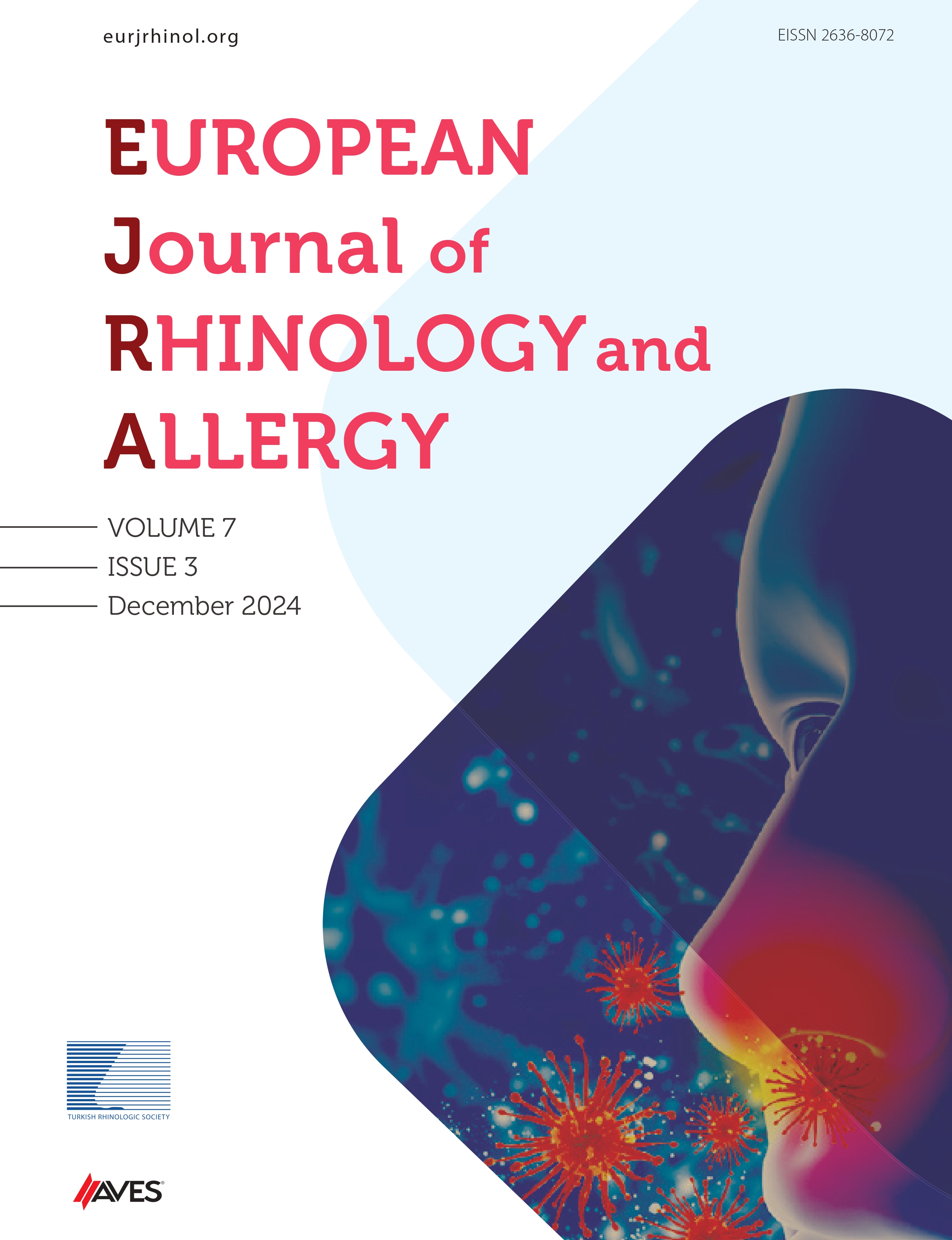Objective: The aim of this study was to evaluate the effect of internal nasal splint and Merocel packing used in septoplasty operations on middle ear ventilation.
Material and Methods: Patients who underwent septoplasty between January 2019 and December 2019 were included. Merocel nasal packing without airway or a silicone internal nasal splint with airway were used. A tympanometry test was performed on patients the day before the operation. Tympanometry tests were repeated on the 1st day (with nasal pack) and on the 10th day (without nasal pack) after the operation.
Results: Of the patients included in the study, 33 (54.1%) were male and 28 (45.9%) were female. The average age was 31.52±10.48 years. The average middle ear pressure in the ear on the side of the deviation before the operation was −11.91±27.33 daPA, and the average middle ear pressure in the ear opposite of the deviation is −9.27±27.13 daPA. When looking at the middle ear pressures between the side with the deviation and the opposite side before the operation, a significant difference was observed. In both ears, middle ear pressures on the 1st and 10th days were found to be significantly higher than the middle ear pressure after the nasal packing was removed.
Conclusion: Before the operation, middle ear pressure was lower on the side of septal deviation. Although there was minimal difference in terms of eustachian dysfunction between the internal nasal splint group and the Merocel group on the first postoperative day, internal nasal splint caused significantly less eustachian dysfunction on the 10th postoperative day.
Cite this article as: Erden B, Taş BM, Türkili S, Uğraş, H. Eur J Rhinol Allergy 2021; 4(1): 26-9.

.png)

.png)